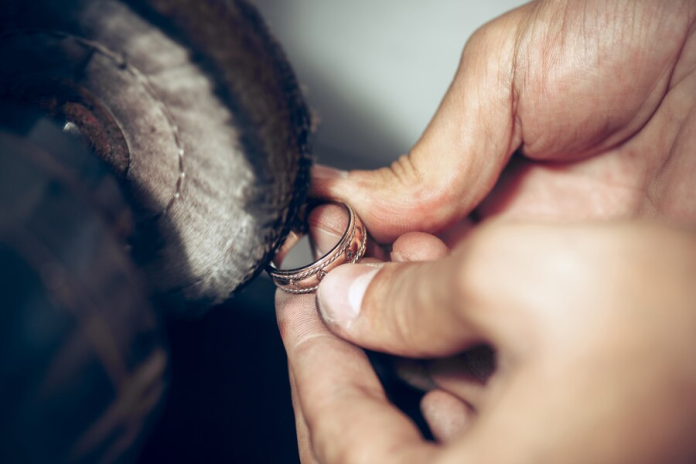Vitrified diamond grinding wheels are renowned for their exceptional precision, durability, and versatility in various industrial applications. These wheels, made by bonding diamond grains with vitrified bonds, offer unparalleled performance in grinding operations, ranging from high-speed precision grinding to heavy-duty material removal. In this comprehensive guide, we will explore the brilliance of vitrified diamond grinding wheels, examining their unique characteristics, manufacturing process, applications, and advantages in modern manufacturing.
Understanding Vitrified Diamond Grinding Wheels
Vitrified diamond grinding wheels are at the forefront of grinding technology, renowned for their exceptional precision, durability, and versatility in various industrial applications. These wheels, crafted by bonding diamond grains with vitrified bonds, stand as a testament to the fusion of cutting-edge materials and advanced manufacturing techniques, revolutionizing the field of abrasive tools. Let’s delve into the intricacies of vitrified diamond grinding wheels, exploring their composition, manufacturing process, and the unparalleled advantages they offer in modern machining and manufacturing.
Composition and Construction
Vitrified diamond grinding wheels are composed of abrasive diamond grains bonded together with a vitrified (ceramic) bond matrix. This bonding process involves combining finely graded diamond particles with a bonding agent, typically composed of ceramic materials such as clay, feldspar, and glass. The mixture is then shaped into the desired wheel profile and subjected to high-temperature sintering, where the bonding agent melts and solidifies, forming a dense, hard matrix that securely holds the diamond grains in place. The resulting grinding wheel exhibits excellent strength, hardness, and resistance to wear, making it ideal for demanding grinding applications.
Manufacturing Process
The manufacturing process of vitrified diamond grinding wheels involves several precise steps to ensure the uniform distribution and bonding of diamond grains within the wheel matrix. It begins with the selection and grading of diamond grains based on size, shape, and quality criteria. The diamond grains are then mixed with the bonding agent in precise proportions to achieve the desired properties. Next, the mixture is shaped into the final wheel profile using molds or pressing techniques. The shaped wheels are then subjected to high-temperature sintering in a kiln or furnace, where the bonding agent undergoes vitrification, forming a strong, homogeneous bond with the diamond grains. After sintering, the wheels are cooled, inspected, and subjected to quality control measures to ensure dimensional accuracy and consistency.
Advantages of Vitrified Diamond Grinding Wheels
Vitrified diamond grinding wheels stand as exemplars of precision and efficiency in the realm of abrasive tools, offering a myriad of advantages that set them apart from conventional grinding wheels. These wheels, distinguished by their exceptional hardness, durability, and versatility, are favored by professionals across diverse industries for their ability to deliver superior performance and impeccable results. Let’s explore the remarkable advantages of vitrified diamond grinding wheels and why they are the preferred choice for precision grinding applications in modern manufacturing.
Exceptional Precision
Vitrified diamond grinding wheels offer unparalleled precision and dimensional accuracy, making them ideal for high-precision grinding applications. The uniformly distributed diamond grains and dense vitrified bond matrix ensure consistent grinding performance and minimal deviation from specified tolerances, resulting in superior surface finishes and tight part dimensions.
High Material Removal Rate
Despite their precision, vitrified diamond grinding wheels are capable of high material removal rates, allowing for efficient stock removal and short cycle times in grinding operations. The sharp diamond grains and robust bond matrix enable aggressive cutting action and long wheel life, leading to increased productivity and reduced machining costs.
Versatility
Vitrified diamond grinding wheels are highly versatile and suitable for a wide range of materials and applications. They can effectively grind hard and brittle materials such as ceramics, glass, and composites, as well as ferrous and non-ferrous metals, including steel, cast iron, and aluminum. This versatility makes them indispensable in industries such as aerospace, automotive, tool and die, and precision machining.
Long Wheel Life
Due to their excellent wear resistance and thermal stability, vitrified diamond grinding wheels exhibit long wheel life, minimizing the need for frequent wheel changes and downtime. The superior bonding strength between diamond grains and the vitrified bond matrix ensures that the abrasive particles remain securely bonded to the wheel surface even under high-speed and high-temperature grinding conditions, resulting in extended tool life and consistent performance over time.
Applications of Vitrified Diamond Grinding Wheels
Vitrified diamond grinding wheels serve as indispensable tools across a multitude of industries, where precision grinding and impeccable surface finishes are paramount. From aerospace engineering to tool and die manufacturing, these versatile wheels find extensive use in a wide range of applications, showcasing their unmatched capabilities and reliability in achieving exceptional results. Let’s delve into the diverse applications of vitrified diamond grinding wheels and explore how they contribute to enhancing efficiency and quality across various sectors of modern industry.
Precision Grinding
Vitrified diamond grinding wheels are widely used for precision grinding applications that require tight tolerances, fine surface finishes, and dimensional accuracy. They are commonly employed in the production of precision components such as bearings, gears, valves, and tooling inserts, where high-quality surface finishes and precise geometries are critical.
Tool and Cutter Grinding
In the tool and cutter grinding industry, vitrified diamond grinding wheels are essential for sharpening and reconditioning cutting tools such as drills, end mills, reamers, and inserts. Their ability to maintain sharp cutting edges and produce smooth surface finishes ensures optimal tool performance and extended tool life in machining operations.
Surface Grinding
Vitrified diamond grinding wheels are also used for surface grinding applications, where flatness, parallelism, and surface finish are key requirements. They are employed in surface grinding machines to grind flat surfaces, such as machine beds, bearing surfaces, and workpiece faces, with high precision and efficiency.
Cylindrical Grinding
In cylindrical grinding operations, vitrified diamond grinding wheels are utilized for grinding cylindrical workpieces to precise diameters, lengths, and surface finishes. They are commonly used in the production of cylindrical components such as shafts, pins, rollers, and cylinders, where dimensional accuracy and surface integrity are crucial.
Conclusion
Vitrified diamond grinding wheels represent the pinnacle of grinding technology, offering unmatched precision, durability, and versatility in modern manufacturing. Their unique composition, manufacturing process, and superior performance characteristics make them indispensable tools in a wide range of industries and applications. From high-precision machining to heavy-duty material removal, vitrified diamond grinding wheels excel in delivering exceptional results and driving efficiency and productivity in grinding operations. With their ability to achieve plating perfection in surface finishes and dimensional accuracy, vitrified diamond grinding wheels continue to play a vital role in advancing manufacturing excellence and shaping the future of industry.

























